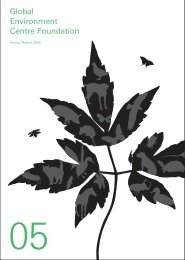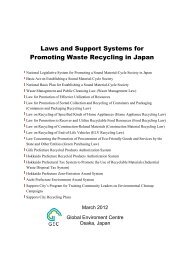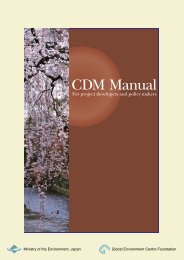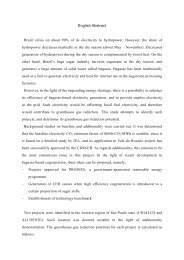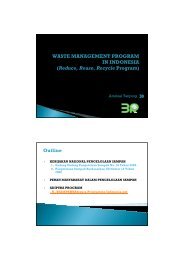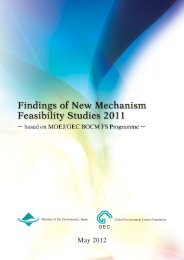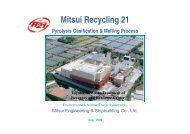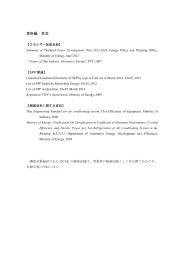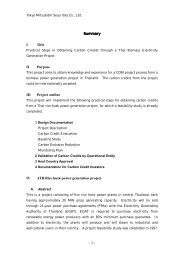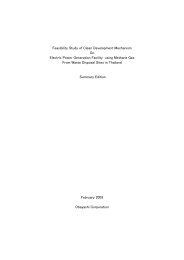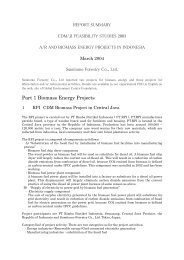PDF File - GEC
PDF File - GEC
PDF File - GEC
You also want an ePaper? Increase the reach of your titles
YUMPU automatically turns print PDFs into web optimized ePapers that Google loves.
2.2.2. Overview of small scale CDM (SSC) project activities<br />
The framework of SSC would enable project participants to use a fast-track approach for CDM<br />
procedures which could help reduce transaction costs compared to those of large scale CDM. SSC<br />
project activities are to meet certain eligibility criteria. Once a project activity is classified as SSC, then<br />
it can:<br />
(a) benefit from being able to use the simplified modalities and procedures for SSC project<br />
activities,<br />
(b) use a simplified PDD form (SSC-PDD),<br />
(c) apply a shortened review period, and<br />
(d) have the same operational entity undertake validation as well as verification and certification.<br />
To use the simplified modalities and procedures for SSC project activities, a proposed project activity<br />
shall:<br />
(a) Meet the eligibility criteria for small scale CDM project activities set out in paragraph 28 of<br />
decision-/CMP.2 (types I to III described below);<br />
(b) Conform to one of the project categories in appendix B to Annex II to Decision 21/CP.8 (refer<br />
to Appendix 2 for the categories); and<br />
(c) Not be a debundled component of a larger project activity, as determined through appendix<br />
C to Annex II to Decision 21/CP.8 (refer to section 2.2.6 (2)).<br />
The modalities and procedures, formats and relevant guidelines for SSC project activities are listed in<br />
Appendix 1.<br />
2.2.3 Definition of small scale CDM (SSC) project activities<br />
Three project types are currently recognized as eligible SSC project activity under emission reduction<br />
type CDM project activities. Each type of SSC project activity consists of several technologies and<br />
measures. The three types of SSC project activities are the following:<br />
(1) Type I: Renewable energy project activities with a maximum output capacity of 15 MW (or an<br />
appropriate equivalent) [decision -/CMP.2, para. 28(a)]<br />
Type I covers renewable energy project activities,<br />
including solar, wind, hybrid systems, biogas or<br />
biomass, water, geothermal, and waste. The total<br />
capacity of a plant used for the project activity<br />
should not exceed 15 MW in output.<br />
Maximum “output” is defined as installed/rated<br />
capacity, as indicated by the manufacturer of<br />
the equipment or plant, disregarding the actual<br />
load factor of the plant. “Appropriate equivalent”<br />
of 15 MW is defined as “appropriate equivalent”<br />
of 15 MW (electric). As MW (electric) is the most<br />
common domination, and MW (thermal) only refers to the production of heat which can also be<br />
derived from MW (electric), the EB agreed to define MW as MW (electric) and otherwise to apply an<br />
appropriate conversion factor [CDM Glos. version 04, page 31].<br />
Maximum output<br />
capacity:<br />
Up to 15 MW<br />
Figure 2-1 Type I - Renewable energy project<br />
activities<br />
27



